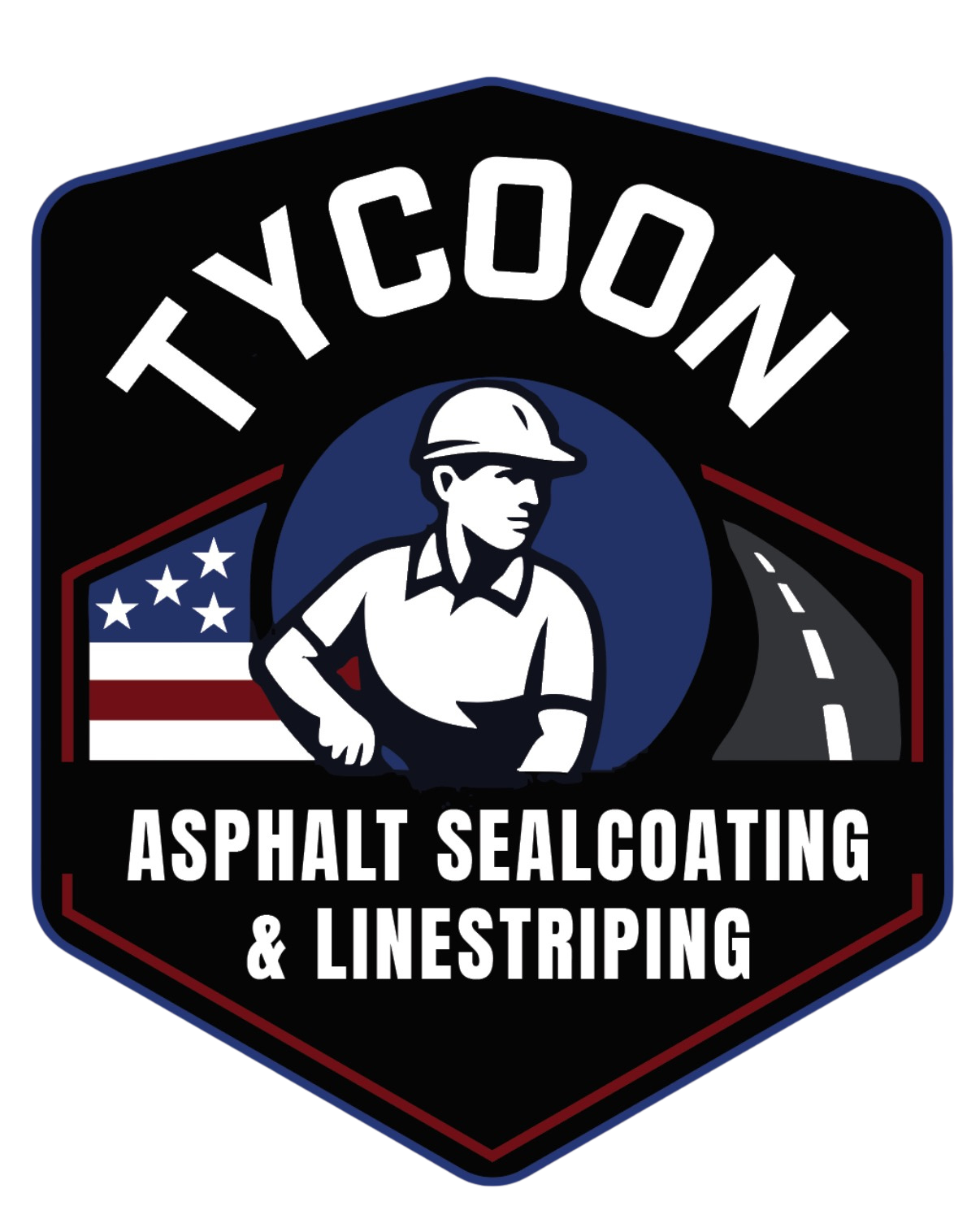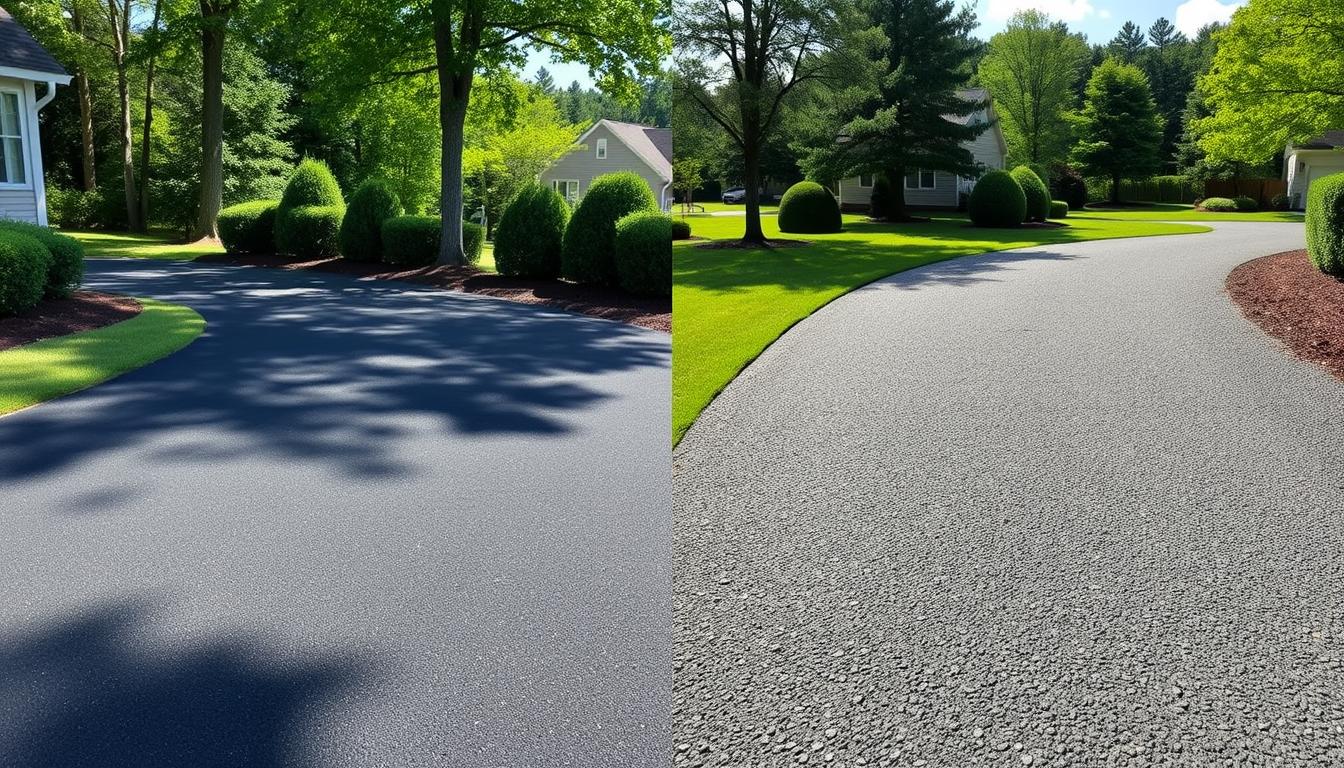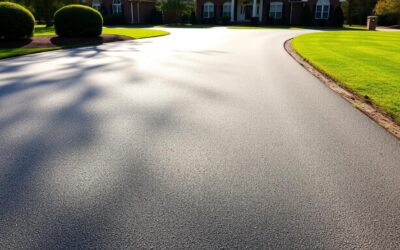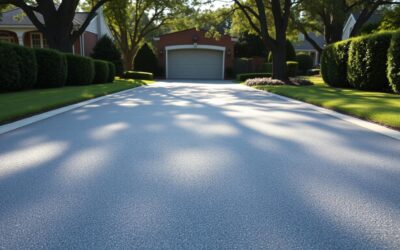We help homeowners and property managers weigh two common choices for driveway care: a fresh surface layer or a full rebuild. Our goal is to make the difference clear so you can choose what fits your budget and long‑term plans.
An overlay is a new hot‑mix layer, usually 1.5–2 inches thick, added when the base is sound and damage is mostly cosmetic. It often costs 30–40% less and finishes in 1–3 days. A full replacement rebuilds the pavement system, can take 1–2 weeks, and typically lasts much longer.
Preparation matters: cleaning, crack repair, a tack coat, and milling for drainage keep work from failing. In our experience, Charlotte’s heat and freeze‑thaw cycles demand good drainage and routine maintenance like sealcoating to protect your investment.
We’ll help you assess condition, compare benefits and cost, and pick the option that balances appearance, life span, and disruption to your property.
What Charlotte Property Owners Need to Know Right Now
Right now, property owners in the Queen City face choices that affect curb appeal, safety, and budgets. A clean, even pavement surface shapes first impressions and keeps people safe when they arrive at your site.
We see that small issues often speed up under summer heat and winter freeze-thaw. Proper prep—cleaning, sealing cracks, and fixing minor defects—keeps work from failing and saves money over time.
For businesses with active parking areas, a quicker surfacing option limits closures and reduces disruptions to customers and staff. We plan work in phases and use signs so traffic keeps moving and downtime stays short.
Common issues we spot are cracking, raveling, small potholes, and faded markings. Each can signal surface wear or deeper problems, and drainage trouble after heavy rains often points to subgrade or slope faults.
Next steps are simple: document visible defects, note ponding after storms, and schedule a brief on-site review. We’ll help turn those observations into a practical plan that protects curb appeal and stretches your money further.
Asphalt Overlay and Full Replacement Explained
Choosing between a surface refresh and a full rebuild starts with understanding how each method works.
We define an asphalt overlay as installing a bonded, new asphalt layer over the existing pavement to restore smoothness, safety, and curb appeal without full demolition.
Typical overlay thickness ranges from about 1.5 to 3 inches. That layer is selected based on traffic, condition, and performance goals.
The overlay process is straightforward: clean the surface, repair cracks and potholes, apply a tack coat for bonding, mill if needed for grade, then pave and compact the new lift.
Full replacement removes the old surface, inspects and repairs the subgrade, installs a compacted aggregate base, then places binder and surface courses for a like‑new system.
Overlays are quicker and more affordable when the base is sound. Full replacement addresses deep structural failure and lasts longer.
We recommend an on-site review of the existing pavement and base to pick the right option and to finish with markings or sealants as needed.
asphalt overlay vs replacement charlotte: The Core Comparison
Cost, life expectancy, and true causes of damage all guide the right pavement choice.
Surface wear vs. structural failure
We treat a new layer as a fix for general wear and cosmetic problems when the base and foundation remain sound.
When cracking runs deep, potholes reveal voids, or water keeps ponding, the underlying base is failing and needs full correction.
When an overlay saves money—and when replacement saves headaches
Overlays usually cost 30–40% less and can be completed in 1–3 days. They commonly add 8–15 years of useful life when the base is stable.
Full reconstruction takes longer—often up to 1–2 weeks—but typically delivers 20–30+ years and fixes drainage and structural faults for good.
We recommend choosing the option that prevents repeat work and protects your investment over time. Our on-site review focuses on drainage patterns, elevation changes, and visible red flags before we advise a path forward.
Condition Checklist: Is Your Existing Pavement a Good Candidate for an Overlay?
B. A quick site check helps us decide whether a fresh top layer will solve visible wear or if deeper work is needed.
We look for surface signs that favor a new wearing course: light to moderate cracking, isolated potholes, fading, and roughness without structural deformation. These issues often respond well to standard repairs, cleaning, and a bonded new layer.
Cracks, potholes, and surface issues we can cover
Small cracks and single potholes can be cleaned, sealed, and patched so the new surface bonds properly. We check that the existing pavement feels stable under traffic and shows no pumping or spongy spots.
Base, foundation, and drainage red flags that push toward replacement
Watch for standing water, saturated edges, or persistent puddles after rain. Those drainage signs often point to sub-base or foundation problems.
Structural red flags include widespread alligator cracking, deep potholes tied to base erosion, and rutting under wheel paths. If edges crumble or fines pump up under load, we recommend full‑depth repairs instead of a surface fix.
We probe problem spots, document ponding with photos, and note recurring defects. Catching damage early lets us resurface sooner and avoid higher costs later. We’ll walk the site with you and mark areas as overlay‑friendly or replacement‑ready so you can decide with confidence.
Costs, Time, and Downtime: What to Expect in Charlotte
Budget, schedule, and avoiding long closures are the three things most clients ask about first. We outline typical costs, how long work takes, and practical steps to keep operations moving.
Upfront cost ranges depend on area size and needed prep. A surface lift usually runs about 30–40% less than a full rebuild because we reuse the existing base. Key cost drivers include cleaning, crack and pothole repair, tack coat, and any milling for grade.
Time on site varies. Most surface projects finish in 1–3 days and reopen in 24–48 hours depending on weather and curing. Complete removal and rebuilds can take up to 1–2 weeks for demolition, base work, paving, and finishing.
We work with businesses and parking lots to reduce downtime. We phase work so entries, ADA routes, and loading zones stay accessible. Scheduling off-peak hours or weekends also cuts disruption.
Get a detailed, line-item quote so you see where your money goes. That transparency helps avoid change orders and lets us plan around weather windows to keep the project on budget and on time.
Durability and Lifespan in Charlotte’s Climate
How long your driveway holds up depends on materials, prep, and seasonal stress. We look at realistic service life so owners can plan maintenance and budget for future work.
Typical years gained: overlay compared to full-depth work
A well-prepared overlay commonly adds 8-15 years of service life, while a full replacement often delivers 20-30+ years. We set expectations so you know the likely return on your investment.
Heat, freeze-thaw, and how maintenance extends service life
Hot summers soften asphalt and speed scuffing; winter freeze-thaw opens cracks that let water reach the foundation. Timely crack sealing, occasional sealcoating, and prompt repairs slow oxidation and moisture intrusion.
Good drainage and solid edge support keep water out of the sub-base so the pavement keeps strength through seasonal cycles. Material choices and proper compaction in heavy-use lanes also reduce wear and extend useful life.
We recommend owner inspections after major storms or heat waves. Small fixes now prevent larger repairs later and keep the appearance and function you expect for years.
How an Asphalt Overlay Works: The Process That Delivers Results
A clear, step-by-step process lets us deliver a consistent, long-lasting surface with minimal downtime. We begin with a careful inspection to spot soft spots, ponding, and areas that need base work before any new material goes down.
Cleaning, crack and pothole repairs, and surface prep
We deep clean the area so the tack and the new lift bond evenly. Small cracks get routed and sealed. Minor potholes are patched to prevent defects from telegraphing through the new layer.
Tack coat for bonding a new asphalt layer
Next we apply a uniform tack coat across the work zone. Proper bonding keeps the layers acting as one under traffic and reduces premature failure.
Milling for elevation and drainage control
We mill selectively where grades need correction. This preserves curb reveals and corrects slopes so water sheds away from the pavement.
New layer asphalt placement and compaction for a smooth finish
We place the specified new layer asphalt, usually 1.5–3 inches, then compact with the right rollers for density and smoothness. After cooling, we stripe, add ADA markings, and schedule sealcoating if desired.
We manage phasing and traffic control, provide closeout records, and hand over a simple maintenance plan so the work performs for years.
Full Replacement, Step by Step: From Subgrade to New Asphalt Surface
We begin a full replacement by exposing the subgrade so we can find and fix hidden problems. This upfront inspection prevents surprises later and sets quality expectations for the whole job.
Removal and subgrade inspection
First, we remove the existing pavement by milling or excavation. That lets us inspect, compact, and correct soil or moisture issues under the slab.
We document conditions, test for soft spots, and make repairs so the rebuilt system rests on a stable foundation.
Installing a stable base and binder courses
Next we place and compact a crushed stone base to specified thickness. We choose materials and lifts to match traffic and loading.
Then we lay binder courses, monitoring compaction and density to meet the design standards for long service life.
Surface/wear course, drainage fixes, striping, and sealants
Finally, we pave the new asphalt surface, adjust slopes and inlets to improve drainage, and verify smoothness with straightedge checks.
We finish with striping, ADA markings, and recommended sealants. We also provide documentation of materials and compaction and explain post-construction care so parking and pavement perform for decades.
Driveways vs. Commercial Parking Lots: Matching the Method to Traffic and Use
Traffic type and load determine whether a quick surface fix or deeper work is best.
Residential driveway wear patterns and curb appeal priorities
Most driveways show cosmetic wear first: faded color, hairline cracks, and minor raveling. An overlay of 1.5–3 inches often restores smoothness and improves appearance quickly.
Turning at garage aprons and cul‑de‑sacs causes scuffing. We tune mix and thickness at those points to resist wheel shear and extend life.
Commercial parking and heavy-traffic areas that demand structural strength
Commercial parking sees heavier loads, frequent turning, and delivery trucks. That traffic can cause rutting and base failure, so we often recommend full replacement for long‑term performance.
When a parking lot has a sound base with manageable cracking or fixed ponding, a new surface can work. We tailor lift thickness and binder choices in drive lanes to handle the load.
We also plan phasing so parts of a lot stay open during work. Fresh striping, ADA upgrades, and safety fixes boost both curb appeal and usability.
For homeowners, we advise scheduling resurfacing before structural issues appear to get the best value. For property managers, timing projects around slow seasons preserves revenue and limits disruption.
Drainage, Elevation, and Long-Term Performance
Caring for water flow and grade before paving prevents many common pavement failures. We prioritize fixes that stop ponding and protect the base so any new layer performs as intended.
Fixing ponding and low spots before the new asphalt layer
We always locate and mark low areas on the lot so water does not sit after storms. Small grading repairs often pair well with a surface lift; they let the pavement dry quickly and limit moisture damage.
If ponding is widespread or tied to poor subgrade, we recommend more extensive base repairs first. That prevents the new material from failing and reduces future repairs.
Why slope, milling, and base repairs protect your investment
Milling helps us control elevations, preserve curb reveals, and keep thresholds at doors and ramps correct. Adjusting slope and tying into drains stops water from seeping under the existing pavement.
We verify slopes with simple water tests and levels before we pave. Addressing these issues up front lowers maintenance calls and extends service life while aligning work with your budget and access needs.
Ready to Choose? Let’s Plan the Best Path for Your Charlotte Property
We’ll start with a short site walk to mark visible cracks, potholes, and ponding so you can see where a surface fix will work and where structure needs attention.
When the base is sound, an asphalt overlay can finish in 1–3 days, reopen in 24–48 hours, and typically adds 8–15 years of service at a lower cost. Full replacement often takes 1–2 weeks and delivers 20–30+ years when deep fixes are required.
Our written plan lists prep steps—cleaning, repairs, tack coat, and milling—to protect drainage and long-term performance. We also map phased work so parking and access stay open with minimal downtime.
Ready for a clear quote and side‑by‑side options? Contact us or read how to maintain your aging driveway for care tips and next steps: maintain your aging driveway.




0 Comments